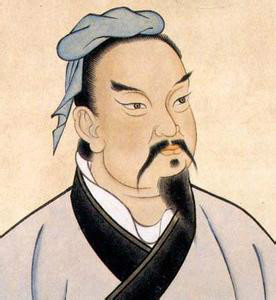Every business needs a strategy to reach its stated Goal. And that strategy must lead to tactics. So, map out your strategy to help you identify precisely what needs to get done.
2,500 years ago, Chinese military strategist, Sun Tzu said: “Strategy without tactics is the slowest route to victory. Tactics without strategy is the noise before defeat.” Sun Tzu’s quote emphasizes the interdependence of strategy and tactics.
The Importance of Strategy
The first part says that having a broad and well-thought-out strategy is crucial for success. However, if the strategic plan isn’t accompanied by specific, well-executed actions (tactics), the path to victory will be slow and may fail.
A strategy is like a roadmap for a business. It sets the overall direction and outlines the approach to achieving a stated goal
. Think of it as the big picture thinking that guides decision-making. Without a strategy, a business lacks a clear vision and may struggle to prioritize its efforts effectively.
The Role of Tactics
The second part highlights that employing tactics without an overarching strategy is akin to making a lot of noise but not achieving a meaningful outcome. It suggests that without a clear plan, tactical actions may lack direction and coherence, leading to eventual failure or defeat. (this is like creating vanity metrics and measuring stuff that doesn’t move the needle!)
Tactics, on the other hand, are the specific actions and maneuvers taken to implement the strategy. They are the day-to-day activities, plans, and procedures designed to achieve short-term objectives and contribute to the broader strategic goals. Tactics provide the practical steps to turn the strategic vision into reality. Tactics drive our activity and it’s that activity that needs to be tracked and monitored with KPIs (Key Performance Indicators).
Goal. Strategy. Tactic.
Those are the building blocks. Most people understand their goal will drive a strategy to accomplish that goal. But what is often lost is what tactical things are required to execute on the strategy to accomplish the goal.
Your job is to figure out how the goal, strategy and tactics are related and how to convince others that what you are asking them to do is important. It’s difficult to figure out what the strategy looks like without mapping it out. And let’s avoid esoteric terms such as Operations Management Processes, Customer Management Processes and Holistic Approach. They don’t describe processes or actionably activity of what needs to get done.
Process:
Begin by defining the overall goals and objectives of the organization. These goals are usually broad and reflect the desired outcomes or achievements.
Once the goals are established, the next step involves developing strategies to achieve those goals. Strategies outline the high-level plans and approaches to fulfill the objectives set by the organization.
After determining the strategies, organizations proceed to the development and the identification of detailed action plans or tactics, specifying the practical steps and resources required. There are many layers of decision-making, and they differ for each organisation. Map them out so you can see the logic in what you are doing, and you can share it with others.
Map out your goal, strategy and actionable activities
Simply saying that we need to host more seminars because our goal is to increase revenue isn’t well thought or planned out. And it doesn’t make sense to tell sales people to make more outbound sales calls to reach their individual quotas. That may or may not help the company to reach its goal of increased revenue, but it may not be the best approach. And people aren’t motivated to do any of those things until they can “see” how it makes sense.
Instead, create a hierarchical map showing the Goal you want achieve, at the top, and how it’s driven by a strategy that in turn informs what actions you need to take. There are several layers in this decision-making and they are all connected. Mapping out the activities that are needed and how they directly align with your overall goal also builds trust. When employees can see how their work contributes to the organization’s goals, it boosts their morale, engagement, and job satisfaction, resulting in a more motivated and productive workforce.
Instead of saying that blogging more will increase Revenue we can instead map it out so it’s supported by logic.
It would look like this:
- The Goal is to increase Revenue by 10%;
- a critical item to accomplish that might be to improve your overall presence in a certain market;
- to do that, you need to engage with a new audience who is unfamiliar to you;
- and the persona or segment is to be engineers in North America;
- for that the approach you may decide on is to show thought leadership;
- an action to accomplish that may be to blog regularly;
- you establish a KPI to monitor how many blogs you write per month and set a target of 3 per month; and another KPI to track the percentage increases in blog readers and set a target of 10%;
This provides an organized flow of how the decision of increasing blogs was determined.
Conclusion
It’s critical for team members to appreciate what their tasks are and how they align with corporate goals. With the goal known, you can illustrate your strategy in a hierarchical map that will identify the tactical activities that are needed.
Since we have decided those specific tasks and activities are necessary for us to reach our goal, we need to monitor and track them to ensure they get done. When a KPI is assigned to an actionable activity, we know exactly what to do differently if the KPI is not being met. And that’s how we will attain our goal.






